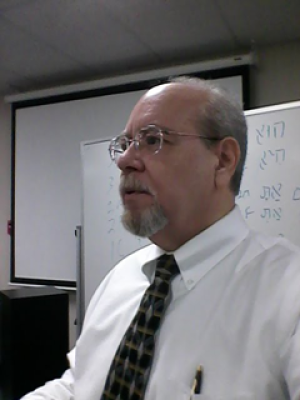Resources

Every once in a while, integration becomes the golden fleece in curriculum design, teaching, and assessment. Deans can feel pressured to identify the way the curriculum, and the Faculty, integrates subjects and learning in the curriculum and its course of study. They may feel frustrated when called upon to find ways to demonstrate, through assessment, that integration is taking place: what it looks like, to what degree, for what outcome. This points to a fundamental challenge: in what ways and to what extent are the things learned in seminary transferable (applicable) to ministry contexts? Novice deans often wrestle with some basic questions. What are we trying to integrate--subjects, fields of study, concepts, skills----all of them? Who is supposed to do the integration--faculty? Students? How do we assess integration? What evidence do we look for? How do you grade it? What does it look like, anyway?! Attempts to engage the faculty in how to integrate the curriculum become frustrating and ultimately futile. If you are frustrated trying to integrate, maybe you're focusing on the wrong thing. Transference of learning. A more helpful framework to focus on may be transference of learning. Transference of learning is a powerful indicator of higher order learning. It denotes the ability of a student to take something learned in one context or a particular field of study, and apply it in a different context or field of study. Transference of learning provides evidence of higher order learning: synthesis, imagination, application, innovation, and creativity. Focusing on transference of learning keeps the focus where it belongs: the student's attainment and mastery of learning. One common attempt among faculty is to focus on integrating content learning---concepts from distinct and diverse fields of study. While that is possible, in reality, it rarely happens by intent or design, and more often than not by serendipity, if at all. Busy faculty members rarely spend enough time in conversation among themselves about their own scholarship, fields of expertise or even discuss their own teaching and courses to creatively design integration in a course of study. Focusing on transference of learning can be a more effective framework for faculty discussion about teaching and learning and its outcomes. Ask a professor "How do you strive to integrate what you teach in your course with what students are learning in a course in a different field of study?" and you'll likely succeed in merely stumping the teacher. Ask, however, "What are those things in your course you want to see your students use or apply in other courses as they continue their courses of study?" and you'll likely get a clear and confident response---and a hint about what to look for. While the concept of transfer of learning is easier to grasp than the vague "integration," it must nevertheless be applied with informed rigor in order to be effective as a framework for teaching and learning in the curriculum. Dale H. Schunk provides a list of types and characteristics of transfers of learning from the literature of educational research. The summary below can serve as a guide to develop program level goals, craft course learning outcomes to align with those goals, and point to evidence for assessment. Types and Characteristics of Transfer of Learning Overlap of learning between situations and contexts: the original and transfer contexts are similar ("near") What is learned in one context enhances learning in a different setting ("positive") Knowledge of a previous topic is essential to acquire new knowledge ("vertical") Knowledge of a previous concept is not essential but helpful to learn a new concept ("horizontal") Explicit new knowledge transfers to new task ("literal") Use some aspect of general knowledge to think or learn about a novel problem ("figural") Transfer of learning involves abstraction requiring conscious formulations of connections between contexts ("high road") Abstracting situations from one learning context to a potential transfer context ("forward reaching") Abstracting in the transfer context features of a previous situation where new skills and knowledge were learned ("backward reaching"). Engaging the Teaching Faculty in conversation about transfer of learning can re-shape its thinking about course methodology and learning outcomes. Using transfer of learning as a framework for assessment may make evaluation of "integration" a less stressful and more effective way to measure student learning. Starting Questions What evidence do you have that students use what they learn in one cognate field of study as applied in another? What evidence do you have that students are able to apply what they learn in academic courses in their ministry contexts? What evidence do you have that students are able to apply what they learn in core courses in their field-based studies and supervised ministry experiences? What transference of learning do you wish to see in what students are learning in basic Bible courses to homiletic courses? What transference of learning do you wish to see between acquired academic skills and ministry context competencies? SOURCE: Schunk, D. (2004). Learning theories: An educational perspective (4th ed.). Upper Saddle River, NJ, USA: Pearson, p. 220.

Those of us who spend our leisure time watching the Tennis Channel are guaranteed to have seen numerous episodes of the marketing promotion called, “Bag Check,” where the top players reveal, one item at a time, what they carry in their huge “clearly labeled” tennis bags. Even though we realize that we are marketing targets, there is something very compelling about analyzing the contents of the bags of these remarkable athletes, and seeing and hearing about what they have decided they wanted access to when they are out on the court during these high-stakes matches toward which they have invested so much of their time and energy. Anybody who has seen me on the court is likely to have very little interest in the contents of my tennis bag, but, as a teacher, this image came back to me as I read several essays written about education and pedagogy in the 1980s and the 1990s, by noted scholar of religion, Jonathan Z. Smith, in which he talked about his practice of spending time in all of his introductory courses to “unpack” his syllabi. Before getting into each major part or section of a course, Smith would explain to his students what, among various options, he chose to focus on, as well as why he made those choices. According to Smith, he did so to show students that a syllabus is always already a constructed argument; talking about how and why he constructed his course in class offered students an (additional) occasion to reflect on how certain judgments were made and how those very judgments might lead to particular implications or consequences. There was, for Smith, also a larger context for this practice. The introductory courses he was describing were all taught to undergraduates. Smith was transparent in explaining that these introductory courses of his were so-called “service” courses. That is to say, students who took these courses usually took them to satisfy their general distribution requirements; they were not taking them as majors in the study of religion. (Even in the early 1990s and at the University of Chicago, the number of religious studies majors was already rather small.) As a result, Smith came to the realization that teaching students disciplinary content and disciplinary methods of religious studies should not be his primary goal. Instead, he aimed to use these introductory “service courses” to help students think and talk about interpretation and argumentation. In other words, whatever content he chose to address in his introductory courses, including his explanation of his syllabus, functioned primarily as case studies to illustrate the reality of multiple interpretations and hence the inevitability of argumentation and adjudication. Why? Because as a literary scholar, Gerald Graff, has argued in his 2003 book, Clueless in Academe, learning to perform, engage, and analyze argumentation is what the academy and education should be all about. Smith went on to suggest that as a teacher, he would not mind if his students did not remember much about the content of his “service courses”; what Smith wanted from his students in these courses was for them to learn and develop the capacity to interpret and argue, as well as the ability to evaluate different interpretations and argumentations. In fact, since most doctoral students in the study of religion end up teaching introductory courses to undergraduates, Smith proposed that doctoral programs in religion should require every student to submit a syllabus with a written rationale for every element that had been included in the course design. (For the same reason, Smith would also like to see more faculty members who supervise doctoral students in religion participate in, rather than being “protected” or “relieved” from, teaching undergraduate introductory courses.) Since moving three years ago to join the Religious Studies Department of a Jesuit liberal arts college, I have found a new and deepened appreciation for many of Smith’s insights. Like most religious studies departments in colleges and universities, mine is mainly a so-called service department, so my courses, especially my introductory New Testament course, are seldom filled with religious studies majors. While a number of them may have chosen to take a New Testament course because of their Christian upbringing, some are also enrolling simply because they have to do a class on religion and mine happens to fit their schedule. For the reasons Smith articulated, I have also changed my introductory New Testament course to focus less on disciplinary content and more on honing students’ interpreting and argument-making skills. My “unpacking” of the syllabus, however, has so far been limited to the first class session of a semester and involves a quick rundown of what we will do and what I will require, but I have never taken the time to acknowledge and to explain—that is, to argue—why we should do what we do and why I should require what I require. Looking back, this is rather lamentable, as I know, even when I was teaching graduate students in a seminary, that scrambling to cover every New Testament book or letter in a semester-long “introduction” (i.e., in approximately 40 hours) would be pedagogically helpful neither to me nor my students. I like the idea of disclosing my deliberations about the materials we will engage, and the approaches we will take with that material right at the outset of the class, not just as a matter of routine housekeeping, but as an example and exercise of the kind of thinking and learning that will follow throughout the semester. Doing so can display the complexity, the difficulty, and the responsibility of making informed but interpretive decisions of what to include and exclude, what to adopt and what to abandon in a world that seldom has neat and clean “answers.” Perhaps it is time also for you to do a bag check: What’s in your bag?

Cláudio Carvalhaes Associate Professor McCormick Theological Seminar To teach is to create worlds. Worlds known and unknown, worlds that we will visit and be visited by, worlds that will haunt us. Worlds that we hope students will engage in many ways. Worlds that hopefully will show the ways in which

Nancy Lynne Westfield Associate Professor of Religious Education Drew Theological School “Learning on the fly,” a phrase used by seminarian Phil Salter, is still on my mind. I am taking a different tact from my previous ponderings …. The inclinations, proclivities and aspirations to fly are abundantly evident in literature

Molly Bassett Associate Professor of Religious Studies Georgia State University In her introduction to Animals in the Four Worlds: Sculptures from India (1989), Wendy Doniger observes that animals and gods inhabit the borderlands of human communities, and as I mention in a piece for Religious Studies News, this notion frames...

Kate Blanchard Last Wednesday most of us opened our cyber-devices to a feed full of news about three young Muslim students in North Carolina who were murdered at home by a gun-toting white neighbor, apparently acting in defense of some...

Israel Galindo is Associate Dean for Lifelong Learning at Columbia Theological Seminary. He also writes for the Wabash Center's Blog for Theological School Deans. Like many others, I started my teaching career emulating those who taught me, and, uncritically imitating...

Karyn L. Wiseman is the Associate Professor of Homiletics at Lutheran Theological Seminary at Philadelphia. One of my goals is to be as creative as I can be – in my preaching and teaching. I have not always thought that...